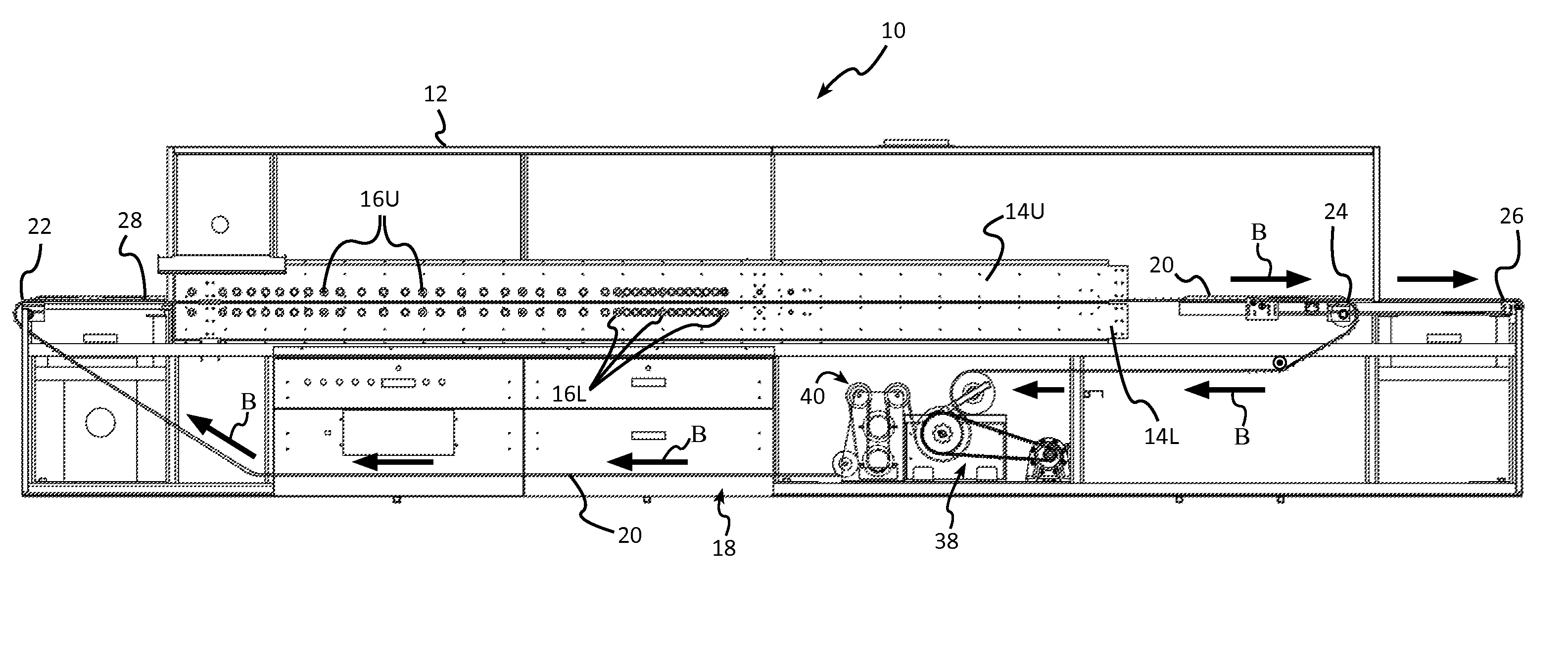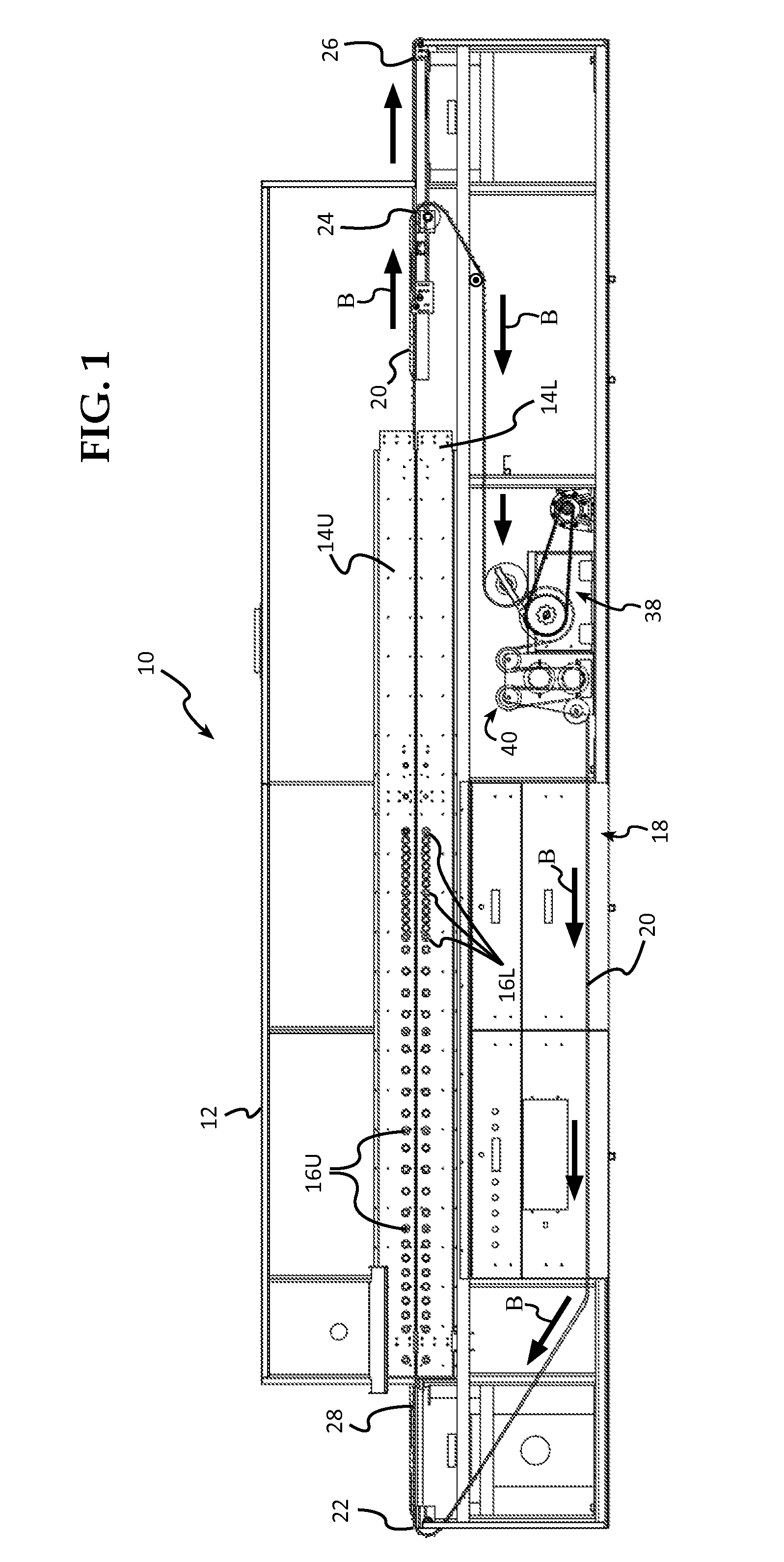Dual Independent Transport Systems For IR Conveyor Furnaces and Methods of Firing Thin Work Pieces
a conveyor furnace and independent transportation technology, applied in conveyors, furnaces, lighting and heating apparatuses, etc., can solve the problems of reducing throughput, abrasion and contamination of back contact layer paste, and large footprint of conventional furnaces, so as to achieve faster processing of wafers, eliminate contamination sources, and improve energy efficiency
- Summary
- Abstract
- Description
- Claims
- Application Information
AI Technical Summary
Benefits of technology
Problems solved by technology
Method used
Image
Examples
Embodiment Construction
[0051]The following detailed description illustrates the invention by way of example, not by way of limitation of the scope, equivalents or principles of the invention. This description will clearly enable one skilled in the art to make and use the invention, and describes several embodiments, adaptations, variations, alternatives and uses of the invention, including several implementation best modes of carrying out the invention.
[0052]FIG. 1 shows a first embodiment of the inventive furnace 10 having a dual independent transport system 18, in this example shown as implemented in an IR lamp-heated conveyor furnace for treatment of thin Si wafers in at least one step of the process of converting them to solar cells. The work pieces, thin Si wafers 28, enter on the left and exit, after processing, on the right in FIG. 1, the heavy Arrows B showing the direction of travel during processing and return of the wafer transport belts.
[0053]The inventive transport system comprises a framewor...
PUM
 Login to View More
Login to View More Abstract
Description
Claims
Application Information
 Login to View More
Login to View More - R&D
- Intellectual Property
- Life Sciences
- Materials
- Tech Scout
- Unparalleled Data Quality
- Higher Quality Content
- 60% Fewer Hallucinations
Browse by: Latest US Patents, China's latest patents, Technical Efficacy Thesaurus, Application Domain, Technology Topic, Popular Technical Reports.
© 2025 PatSnap. All rights reserved.Legal|Privacy policy|Modern Slavery Act Transparency Statement|Sitemap|About US| Contact US: help@patsnap.com



